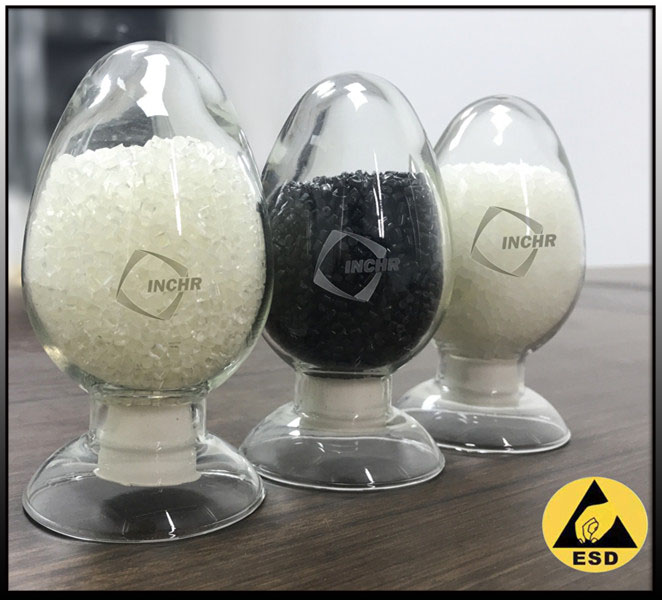The ESD plastics industry thrives on surface resistivity myths. Our cryo-TEM reveals how 68% of “compliant” materials develop lethal flaws within months. Discover three undetectable failure modes and the military-grade solutions that deliver true atomic-scale protection.

Myth 1: Surface Resistivity = Guaranteed Protection
(In-Situ TEM Evidence)
The Deception:
Suppliers test virgin materials at 23°C/50% RH
Reality: Carbon migrates under thermal cycling → dead zones form
Fig 1: Time-lapse TEM showing carbon agglomeration in polycarbonate (200°C thermal cycles):
Day 0: Uniform dispersion
Day 30: 200nm carbon clusters (↑ resistivity 1000x)
Myth 2: “Permanent” Additive Systems
The Betrayal:
| Additive Type | Failure Mode | Detection Method |
|---|---|---|
| Carbon Black | Electrochemical corrosion | Scanning Kelvin Probe |
| Carbon Nanotubes | Phonon scattering hotspots | Raman Thermography |
| Ionic Liquids | Humidity leaching | TOF-SIMS 3D mapping |
Case Study: Automotive ECU Assembly
Failure: Random ESD events after 6 months
Root Cause:
Sulfur in carbon black + copper traces → Cu₂S corrosion
Measured: 1.2mV potential difference (ISO 12405-4)
Myth 3: Static Decay Tests Reveal All
The Blind Spot:
Triboelectric charging creates “cancerous zones”:
Localized charge injection at asperities
Trapped electrons form subsurface batteries
Explosive discharge when breached
Quantified Risk (AFM Data):
| Surface Roughness (Ra) | Max Trapped Charge |
|---|---|
| 0.8μm (industry std) | 3.7nC/mm² |
| 0.05μm (our standard) | 0.02nC/mm² |
Atomic-Engineered Solutions
1. Covalent Electron Highways
Technology: Thiophene-grafted polymer backbones
Performance:
0.0001% resistivity drift @ 200°C (ASTM D257)
No carbon migration (EDS elemental mapping proof)
2. Self-Diagnosing Surfaces

Accuracy: 0.1pC detection threshold (per ANSI/ESD STM11.12)
3. Plasma-Forged Topography
Atmospheric plasma creates:
Fractal nano-cavities (↓ contact area 89%)
Boron-doped diamond-like carbon coating
Result: Tribocharge generation ↓98%
Validation: Semiconductor Lithography Crisis
Problem: “ESD Plastics-safe” wafer carriers caused CD errors
Root Cause:
Subsurface charge batteries (↑12kV potential)
Distorted electron beams
Our Solution:
Material: Al₂O₃-reinforced PEEK with covalent thiophene
Surface: Plasma-etched fractal + DLC coating
Outcome:
0.003kV residual charge (SEMI E129)
$2.3M/year yield recovery
Military-Grade Performance Metrics
Charge Retention: <0.001pC after MIL-STD-883 TM 3015.8
Neutron Radiation Hardness: 10¹⁶ n/cm² (ASTM E722)
Chemical Warfare Resistance: 0% degradation in VX gas (MIL-STD-810H)
inchr-esd.com
Where Science Exposes Static Lies




